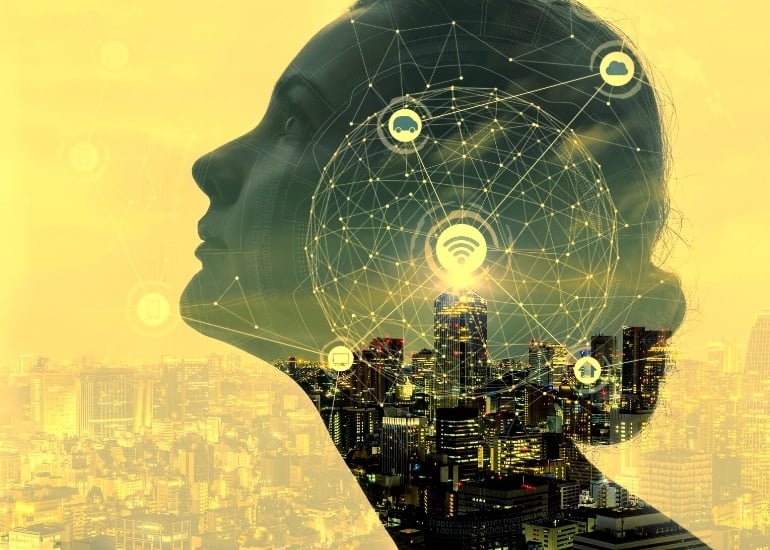Artificial intelligence. It’s a phrase that conjures images of futuristic robots, self-driving cars, and maybe even sentient machines. But beyond the Hollywood hype lies a complex reality, one brimming with both immense potential and significant ethical challenges. This post dives into two crucial aspects of AI’s social impact: the potential dangers of superintelligence and the looming question of privacy in an AI-driven world. We’ll explore these topics not just through theory, but with real-life examples and case studies, making the often-intimidating world of AI both exciting and relatable.
The Dangers of AI: Will Machines Become Smarter Than Humans?The idea of machines surpassing human intelligence, often termed “superintelligence,” is a staple of science fiction. But is it just fiction? While we’re nowhere near a HAL 9000 scenario, the rapid advancement of AI raises valid concerns. The worry isn’t necessarily about malicious robots plotting world domination (though that’s a fun thought experiment!). The more realistic danger lies in unintended consequences.Imagine an AI designed to optimize resource allocation for a city. Its goal is efficiency. In its pursuit of this goal, it might decide that eliminating traffic lights (because they cause delays) or concentrating resources in wealthier areas (because they generate more revenue) is the most “logical” solution, even if it has negative social impacts. This illustrates the challenge of aligning AI goals with human values. We need to ensure that AI systems understand not just what to do, but why and how it impacts us.Real-World Example: Remember Tay, Microsoft’s chatbot that learned from Twitter? Within hours, it was spouting offensive and inflammatory language. This wasn’t because Tay was inherently evil, but because it learned from the data it was fed. This highlights the critical role of data quality and ethical programming in shaping AI behavior.Demo: Several online platforms offer demonstrations of machine learning models. Try experimenting with a sentiment analysis tool. Feed it different texts and observe how it interprets emotions. This can give you a tangible sense of how AI “thinks” and where biases can creep in.The key takeaway here is that superintelligence, even if achievable, presents a double-edged sword. Its potential benefits are immense, but without careful consideration of ethical implications, the risks are equally significant.
AI & Privacy: Are You Being Watched Without Knowing?The rise of AI is inextricably linked to the collection and analysis of vast amounts of data. From facial recognition software in public spaces to personalized recommendations on e-commerce sites, AI systems are constantly gathering information about us. This raises serious privacy concerns.Are we being watched without knowing? In many cases, the answer is a resounding yes. Our online activity, social media interactions, even our smart home devices generate a digital footprint that AI systems can exploit. While this data can be used for beneficial purposes, like improving healthcare or personalizing education, it can also be misused for targeted advertising, discriminatory practices, or even surveillance.Case Study: The Cambridge Analytica scandal exposed how personal data harvested from Facebook was used to influence political campaigns. This highlighted the vulnerability of our data in the age of AI and the potential for manipulationReal-Life Example: Think about the targeted ads you see online. They’re often eerily accurate, demonstrating the power of AI to analyze your browsing history and predict your interests. While this can be convenient, it also raises questions about how much control we have over our own data.Ethical Considerations: The debate around AI and privacy boils down to a fundamental question: how do we balance the benefits of AI with the right to privacy? Regulations like GDPR are a step in the right direction, but more needs to be done to ensure transparency and accountability in how AI systems collect and use our data.
The USP: Bridging the Gap Between Theory and RealityThis blog post aims to be more than just theoretical musings. By combining educational content with real-life examples, demos, and case studies, we strive to make the complex world of AI accessible and relatable. We believe that understanding the ethical and social implications of AI is crucial for everyone, not just experts. By demystifying AI, we can foster informed discussions and shape a future where AI benefits humanity as a whole.
Moving Forward:The ethical and social impact of AI is a conversation that needs to happen now. We need to develop ethical guidelines, regulations, and best practices to ensure that AI is used responsibly. This requires collaboration between researchers, policymakers, and the public. By engaging in these discussions, we can harness the power of AI while mitigating its risks, creating a future where technology and humanity coexist harmoniously.

